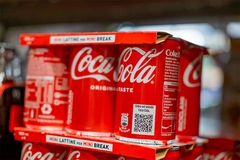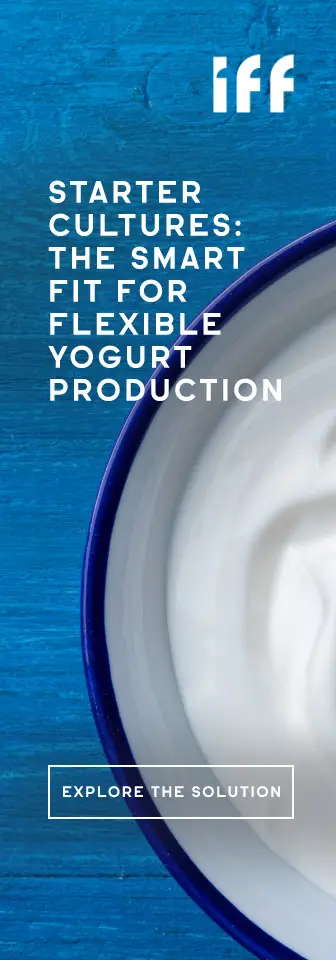Curbing methane in the food chain: Report targets livestock, rice and food waste
04 May 2023 --- Sixty percent of methane emissions come from global food systems and reducing methane by 30% by 2030 is vital to achieving the Intergovernmental Panel on Climate Change (IPCC) climate targets. However, greenhouse gas emissions have continually increased in recent years, with 2021 and 2022 recording the largest increases in methane emissions ever recorded, according to Climateworks Foundation and Global Methane Hub.
Researchers flag that it is possible to reduce food systems’ methane emissions by 75% by 2050 by increasing R&D methane innovation investments from the current US$10 to 20 billion to over US$60 billion per year by 2035.
According to a new report published yesterday, most of the technology needed already exists today, but they are not evenly distributed. Thus, they say that part of the money should go toward policy and social innovations to disseminate these technologies.
The investments would, in the process, create 118 million jobs and reduce the costs of the climate transition by US$1.1 trillion by 2050. This would also free up hectares of land for local communities and protect and restore ecosystems.
With the current global warming trend, food production is already affected by severe weather events, such as the Northern Hemisphere drought of 2022.

Methane is 84-86 times more potent at warming over a 20-year period, according to the UN Economic Commission for Europe, cuthing methane having a faster incidence in cooling the planet.
Targeting rice
According to the Climateworks Foundation, rice contributes to 13% of global methane emissions and feeds over four billion people, but it is a “difficult but necessary sector to tackle.”
Nonetheless, the foundation is not looking to remove rice from planetary diets. Much can be done, instead, to make rice production more sustainable. Twenty to 30% of rice production is lost due to early or delayed harvesting, spillage, inefficient retrieval, processing factors, machine efficiency, operator errors, decay during storage and pest infestation.
 Red seaweed fed to cows as a methane blocker is backed by a growing body of research.Finding varieties of rice that emit less methane and direct dry seeding are the solutions that show the most promise.
Red seaweed fed to cows as a methane blocker is backed by a growing body of research.Finding varieties of rice that emit less methane and direct dry seeding are the solutions that show the most promise.
“We need to make investments that not only reduce methane emissions of rice but at least maintain its nutrition content.” Dr. Avery Cohn, director of the food and agriculture program at the ClimateWorks Foundation, tells FoodIngredientsFirst.
“We also need to ensure that the transitions are just, as we invest in curbing methane, from food and agriculture, some parts of the economy will need to expand, while others will contract,” he continues.
Other innovations, such as methane-inhibiting fertilizers, are also flagged as key innovations.
According to scientists, Southeast Asia would benefit the most from innovations in the sector.
“Rice farmers are facing ever-growing adverse impacts of climate change felt on a daily basis, yet the adoption of low-carbon innovations is slow due to lack of incentives and capacity,” says Vu Duong Quynh, vice head of the environmental chemistry division at the Vietnam Institute for Agriculture Environment.
Duong also recommends that farmers don’t burn the rice straws when managing their crops’ residues.
Livestock system transformation
Ruminant livestock – cattle, sheep and goats – is the largest methane emission source in global food systems (producing around half of emissions) and the sector “in which the greatest economic value can be generated through innovation,” according to the scientists.
“We found that Latin America, South Asia and Sub-Saharan Africa would benefit significantly from innovations in this sector. Which include improving herd vaccination, breeding and management,” Avory says.
To reduce emissions, the researchers also recommend improving feed types, management and additives.
For example, Bill Gates is backing a start-up targeting methane emissions in agriculture through its synthetically replicated red seaweed. Red seaweed fed to cows as a methane blocker is backed by a  FAO estimates that less than a quarter of food wasted in the US and Europe could feed all starving people across the globe.growing body of research.
FAO estimates that less than a quarter of food wasted in the US and Europe could feed all starving people across the globe.growing body of research.
Similarly, Ben & Jerry’s, Straus Family Creamery and Clover Sonoma use a supplement for cows made from dehydrated red seaweed that cuts emissions by more than 80%.
The scientists also recommend “marketing low-methane proteins aggressively” from non-ruminant livestock, fish, poultry, vegetables and alternative food products.
Tracking food waste
The researchers have found the biggest innovation gap in food waste and loss in improving cold chain efficiency through real-time tracking of food stocks, using monitors and sensors and expanding on-grid and off-grid cold storage options.
Improving composting is also a key innovation, especially in the long term, with end products also being able to be converted into biofuels, fertilizers and animal food. The researchers recommend waste diversion, mechanical biological treatments and methane capture and re-use at existing landfills.
“In the short term, improving the cold chain will have the biggest payoff. Over the longer term, composting capacity makes the most difference. For context, one-third of the food produced for human consumption is lost or wasted each year. The food contribution to solid waste methane emissions is ~85% (the rest is from other organic matter like paper, grass clippings, etc.),” explain the scientists.
By Marc Cervera















